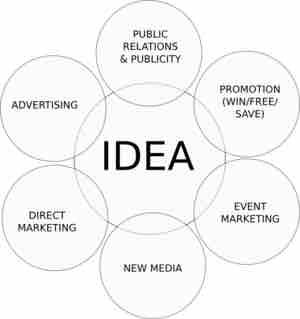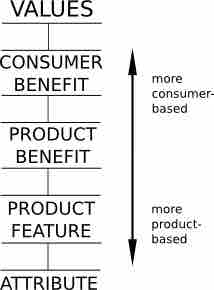Advertising – How Marketers Communicate to Consumers
When a company pays to have a message that defines its goods or services delivered or communicated to as many people as possible, they are said to be advertising. Effective advertising illustrates the product's value and gives consumers a reason to take action and/or buy. There are a variety of ways to promote a product. These methods are collectively referred to as Marketing Communications (MarCom) Matrix, and include direct marketing, public relations/publicity, new media, and advertising.
Through advertising, a marketer hopes to communicate a message to a targeted consumer group via means including print, electronic (radio and television), the Internet and mobile phones. Advertising generates feedback that is analyzed and measured. Good feedback typically translates into money spent on the product while bad feedback prompts the marketing source to reevaluate its marketing plan.
The Anatomy of an Advertising Campaign
Developing a brand character statement sets the tone of the campaign and defines what the targeted consumer group should do or feel when they are exposed to it. The strategy addresses the message that will be communicated while creative tactics dictate how the strategy is actually implemented.
A target group or audience is defined through information gathered from focus groups, demographics and by psycho-graphics, i.e. statistics illustrating how a certain group thinks and ultimately buys.
The product's pros and cons are identified so that benefits are sold. How the product differs from its competition or its Unique Selling Position (USP) is also established. Facts, statistics, consumer images and scenarios are used to corroborate a campaign's premise. Terms like "the best," "new" and "traditional" position the product within the marketplace.
A campaign must fit the image of the marketer to ensure that its public perception remains intact. It must offer a rationale or "reason why" a product is able to deliver on its claim. Its "aperture," or the proper timing and placement of an ad, can maximize a campaign's success.
Developing a Media Plan
The media plan is an integral part of the advertising campaign and is developed simultaneously with the creative strategy. The standard media plan has four stages:
- Stating objectives like reach or the number of different persons exposed, frequency of times the consumer is exposed to a message, and timing of media assertions over the course of the campaign.
- Assessing how a particular message and target audience relates to different types of media by analyzing the research findings provided by the media type.
- Implementation of media choices dictated by available budget or media types most likely to deliver the best results. The placement of advertisements along with their size and positioning are based upon data associated with the targeted consumer group.
- The media budget is included in the actual advertising budget.
The Advertising Business and New Media
Advertising is often the only method of communication businesses use to speak to prospective consumers. Advertisements must reflect prevailing ideas by tapping into the social, cultural and moral pressures. Emerging advertising agencies often structure their business model to society's ever changing ideals. Current technology is forcing advertisers to move away from antiquated structure and practices. The growth of interactivity and open sourcing has placed power in the hands of the consumer, giving them control over what they want to see and when they want to see it.
Advertising's value is based upon how often it is viewed, used or shared. If the message is reaching more people, it is achieving the desired results. New media accelerates the process. No longer is a product limited by the scope and time-frame of a conventional advertising campaign. If an advertisement is interesting, entertaining or helpful, the message goes "viral" via social-networking websites and blogs. The once passive consumer has become a part of the process; an active advertising channel who impacts brands and how a product is perceived.

Mar Com Matrix
The building blocks of successful marketing

The Ad Ladder
The key to successful advertising is to sell benefits, not features.